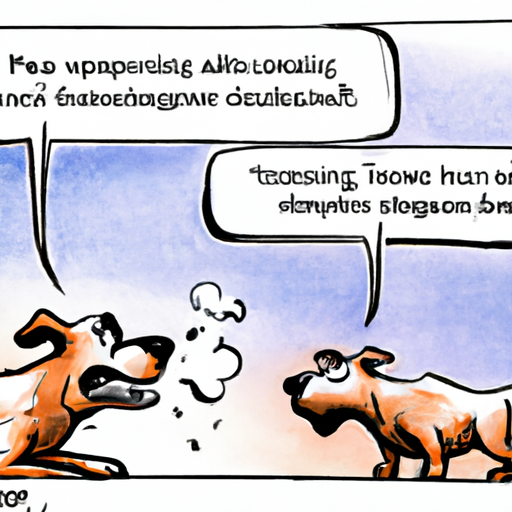Understanding Your Dog’s Behavior
Understanding dog behavior is essential in your role as a caregiver. Dogs, like humans, don’t act without reason. There’s often an underlying issue that triggers aggressive behavior. It’s crucial for you to know that dogs don’t attack “out of the blue”. Even the most loving and loyal dog can become aggressive under certain circumstances.
Root Causes of Aggression:
– Fear or anxiety
– Possessiveness
– Illness or pain
– Frustration
The Role of Fear and Anxiety
Fear is a powerful motivator for dogs. If they feel threatened or scared, their instinct is to protect themselves. This is where the “fight or flight” response comes into play. If a dog can’t flee, they may resort to aggression. In these situations, it’s crucial for you to recognize signs of fear and anxiety in your dog. These can include:
- Ears pinned back
- Tail tucked between their legs
- Avoiding eye contact
- Shaking or trembling
Possessiveness: The Resource Guarding Issue
Dogs, by nature, are possessive creatures. They have an inherent need to protect their resources, which could be anything from their food to their favorite toy, or even you. This behavior, known as resource guarding, can lead to aggression if not properly managed.
| Signs of Resource Guarding | Solution |
|---|---|
| Growling when someone approaches their food | Train them to understand that people approaching their food is not a threat |
| Aggression when someone tries to take their toy | Teach them the “drop it” command |
| Overly protective of a family member | Use positive reinforcement to break the association between people and threat |
Illness or Pain: The Hidden Trigger
Just like humans, dogs can become irritable and aggressive when they’re not feeling well. Pain can cause even the sweetest dog to lash out. If your dog’s aggression seems sudden and unprovoked, it might be a good idea to consult a vet. They could be suffering from an undiagnosed medical condition that’s causing them discomfort.
Frustration: When Dogs Can’t Get What They Want
Frustration is another common cause of aggression in dogs. When they can’t get what they want, they can become frustrated and this can lead to what’s known as redirected aggression. If you notice this behavior in your dog, it’s important to address it immediately. Redirected aggression can be dangerous because it’s often unpredictable.
FAQs
1. Why did my dog growl at me when I tried to move him while he was sleeping?
– Dogs can sometimes feel threatened if disturbed while they’re sleeping. This is known as sleep startle reflex. It’s best to avoid waking your dog suddenly.
2. What should I do if my dog is showing signs of aggression?
– If your dog is showing signs of aggression, it’s important to consult a professional. A qualified dog behaviorist can help you understand the root of the aggression and provide strategies to address it.
3. Can certain breeds be more aggressive than others?
– While some breeds have reputations for being more aggressive, it’s important to remember that aggression is not breed-specific. Any dog, regardless of breed, can show aggression under the right circumstances.
4. Is it normal for puppies to be aggressive?
– Puppies often display behavior that may seem aggressive, but it’s usually just playful behavior. However, if your puppy is showing signs of serious aggression, it’s worth consulting a professional to nip the problem in the bud.
Remember, as a caregiver, your role is to understand and address the needs of your dog. Understanding why dogs may display aggressive behavior is the first step towards creating a safer, happier environment for both you and your pet.



